How to identify a satellite in orbit
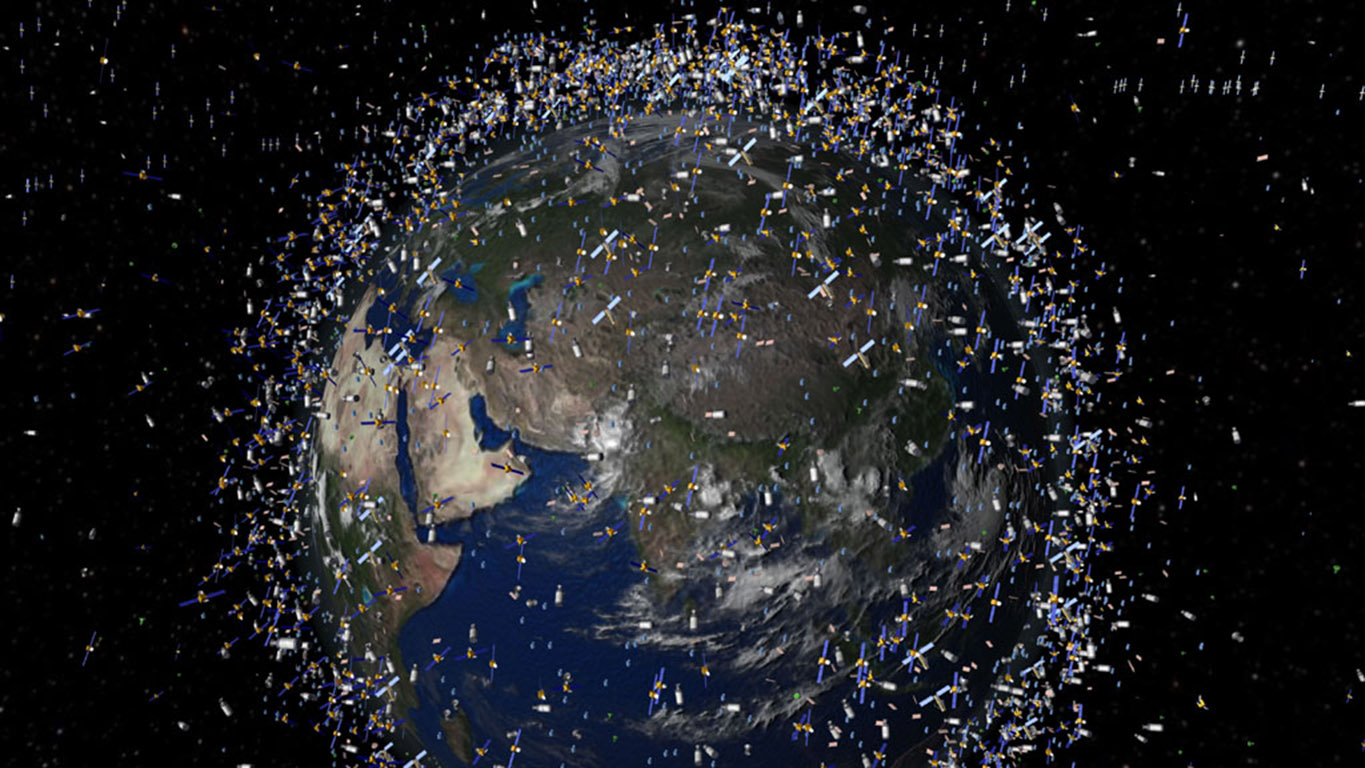
During the search for signals from the Russian satellites MKA-N, a signal was detected from an unidentified satellite, which I do not have in the catalog. I will remind the vehicles MKA-N No. 1 and No. 2 were launched on July 14, 2017 from the Baikonur cosmodrome and did not get in touch. For an unofficial reason - due to the accident with the Fregat accelerating unit, although Roscosmos does not recognize this. The manufacturer of these two devices is a private Russian company “Dauria Aerospace”. Now Roscosmos requires a startup of 290 million rubles for non-working spacecraft. After 3 days of searching for signals, they were never found. But another curious signal was detected. I do not have this device in the catalog, so it must be identified and recorded in my catalog.
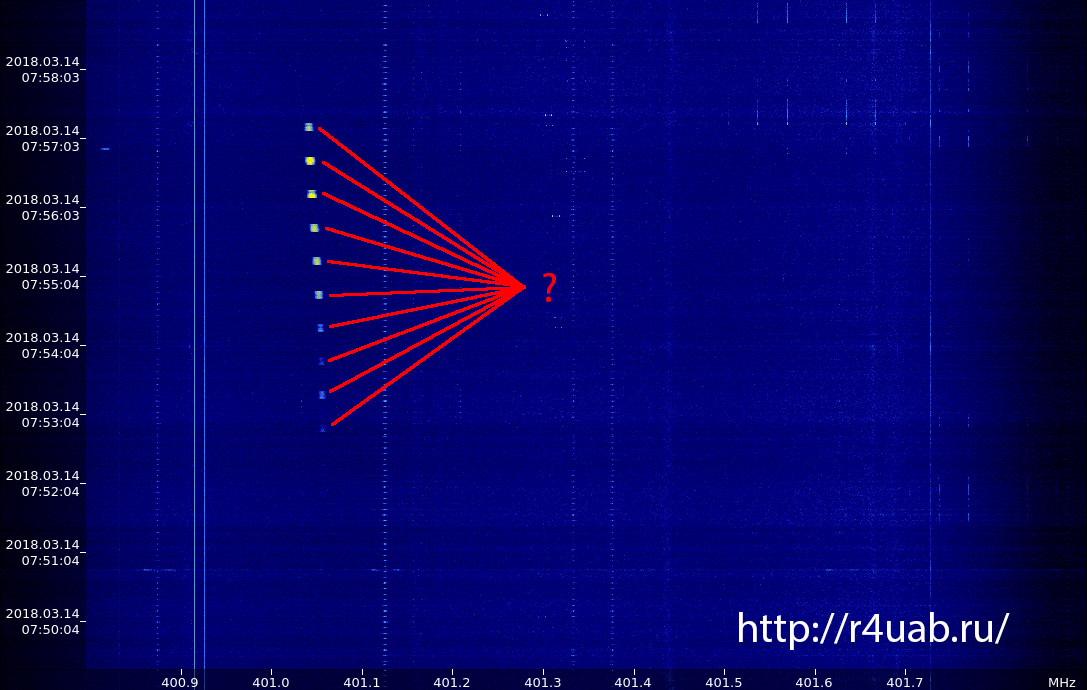
First of all we go to the site www.space-track.org and download the TLE of all objects in Earth orbit and load them into the Orbitron program. Orbitron is a satellite tracking system designed for radio amateurs and lovers of visual observations. It is also used by meteorological professionals and users of satellite communications. The program shows the position of the satellites at any given moment (both in real time and in simulation mode). The program is FREE (Cardware), and is considered one of the easiest to use, and at the same time the most powerful satellite tracking software, according to thousands of its users from around the world.
')
We obtain the coordinates of all objects in Earth orbit, which were in the catalog (16789 objects)
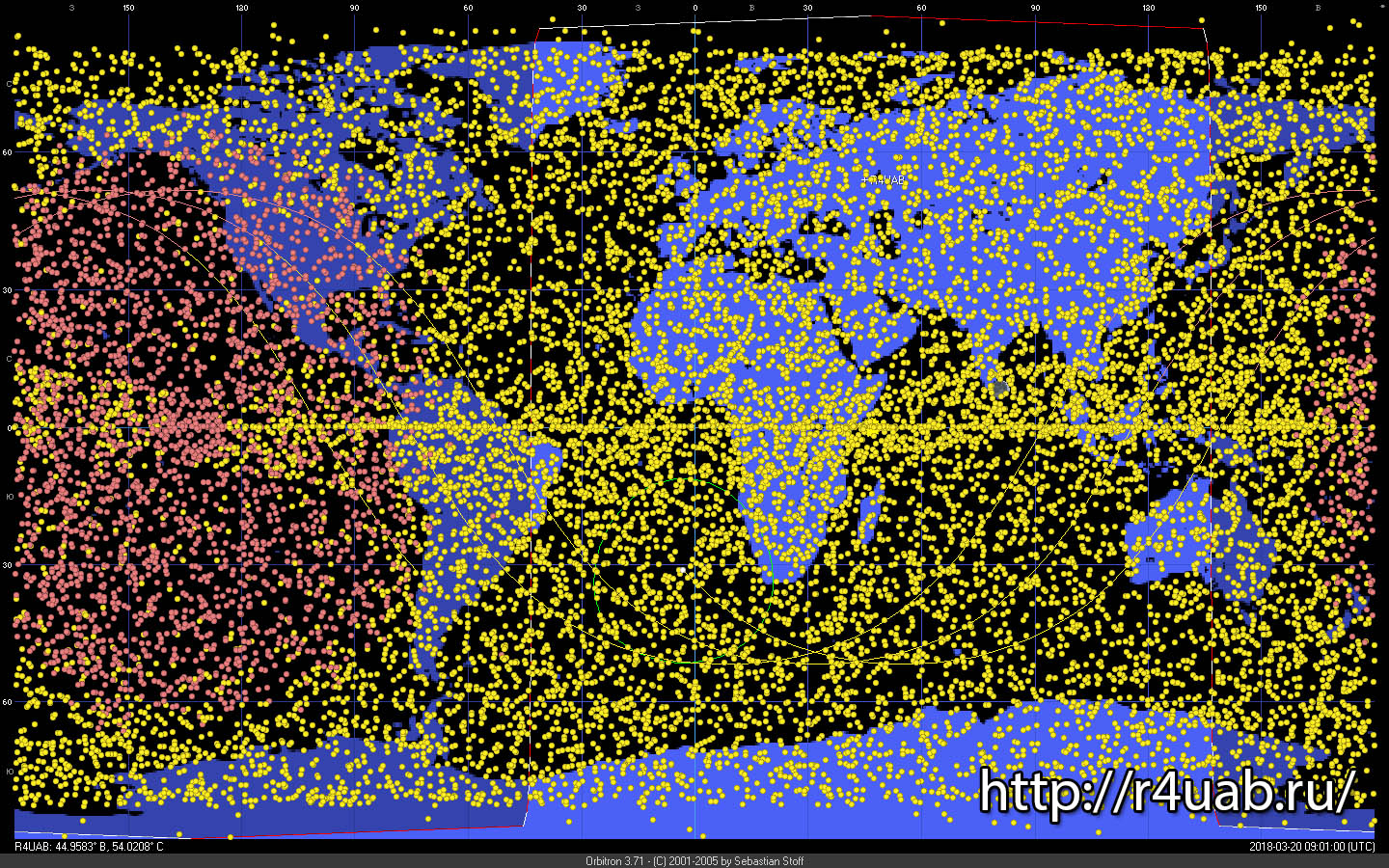
Go to the simulation mode and set the date and time when we heard the signal from the satellite. We get a picture of all the objects above the head (for visualization). One of them is our device that we want to identify.
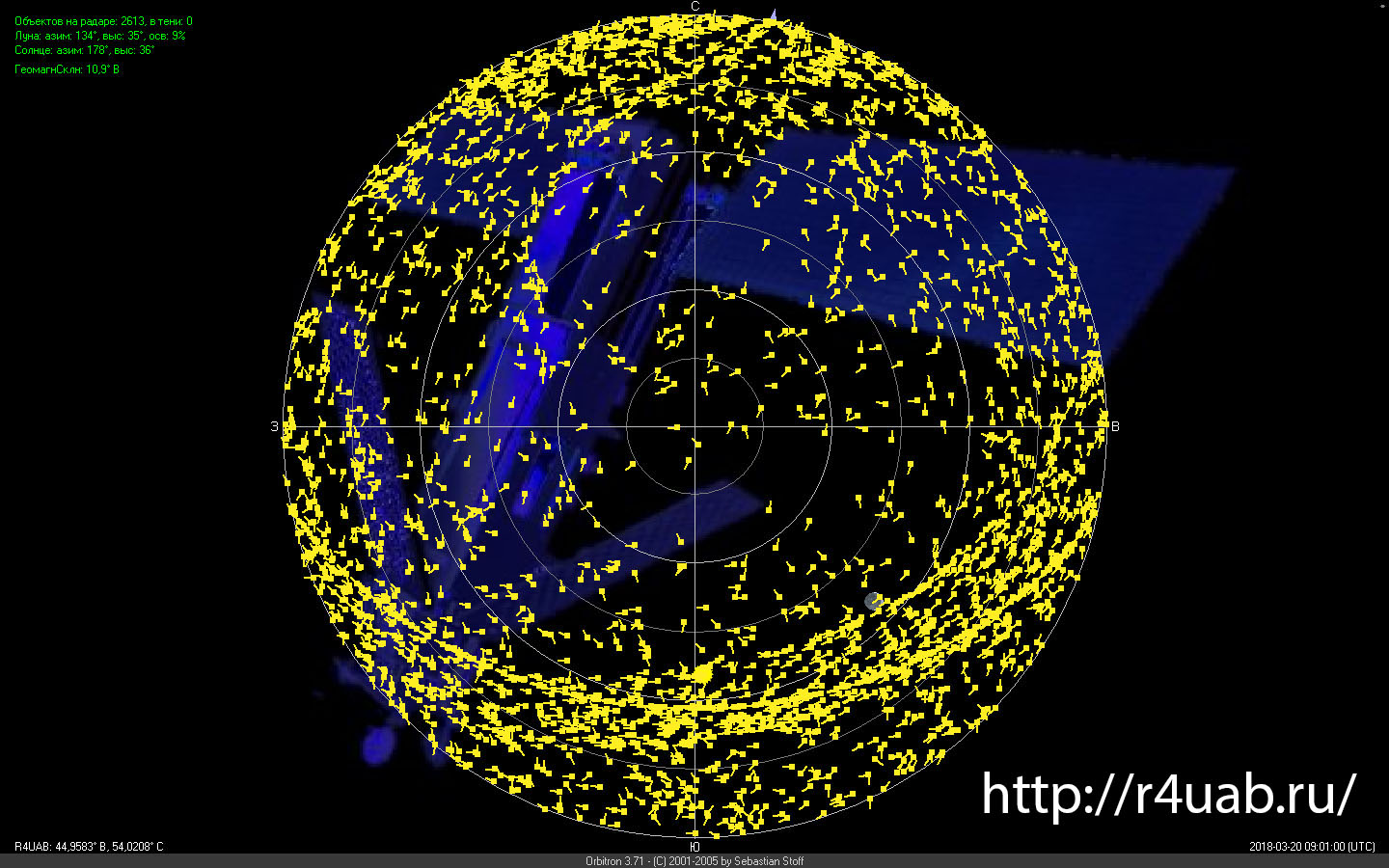
Now, using the calculation, we will find out which satellites were overhead during this time interval. Received figure in 1868 objects. It is to look for a needle in a haystack :-)
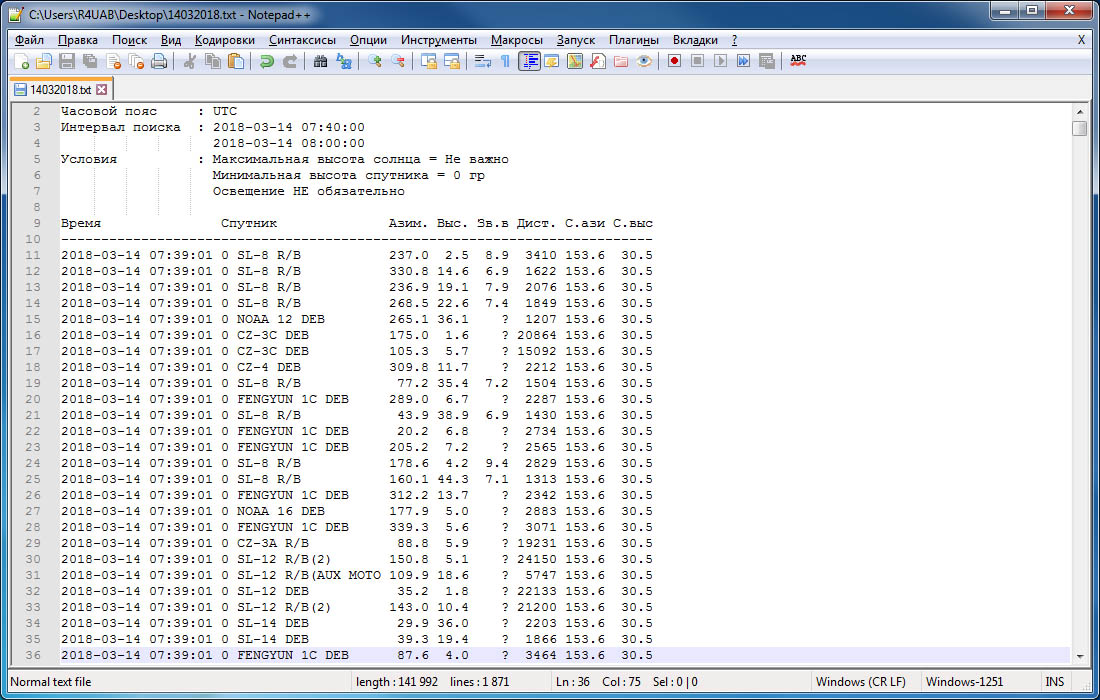
It is necessary to reduce the number of devices to a minimum. For this you need to know the orbital period of the satellite. We spend a couple of observations in anticipation of the appearance of the signal and calculate the time between them.
The appearance of the first signal:
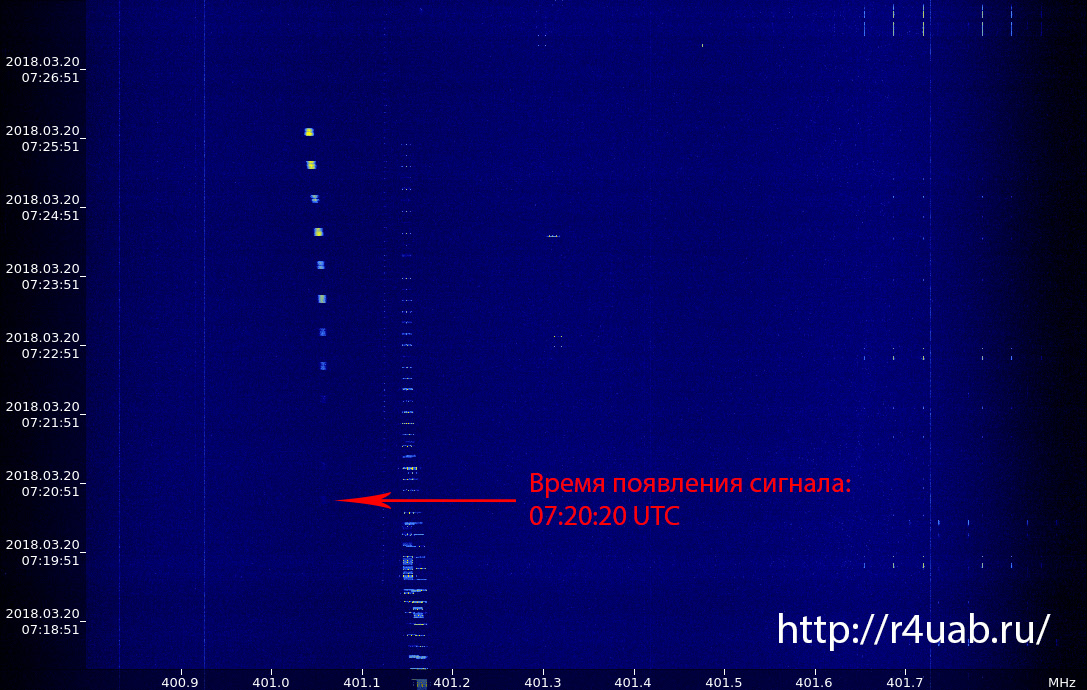
The appearance of the second signal:
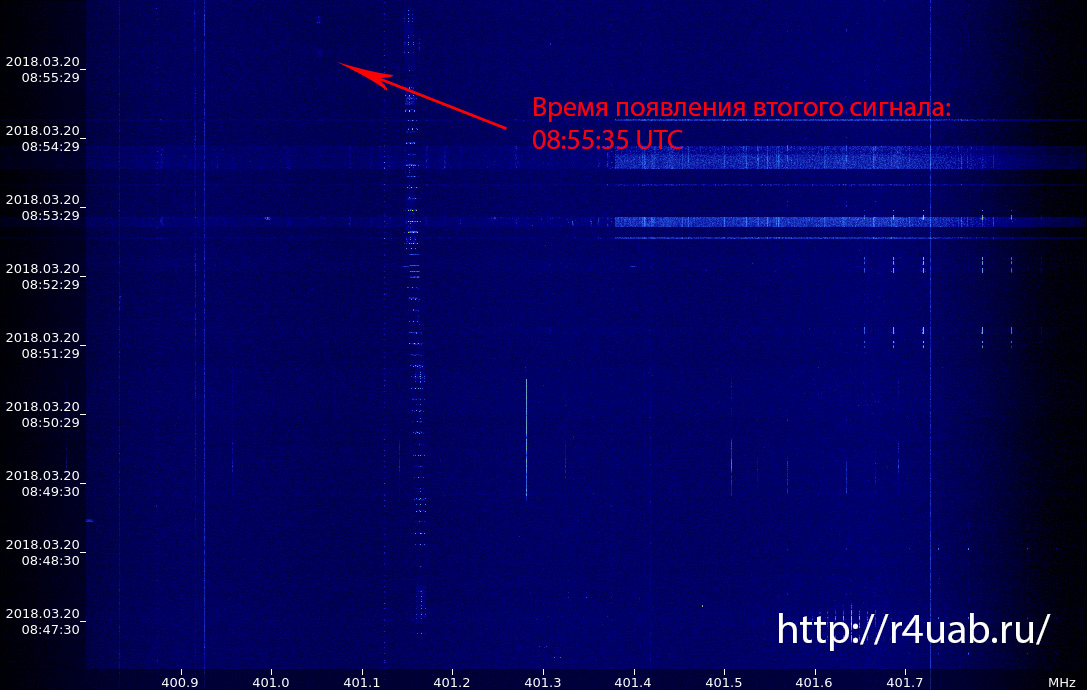
From the obtained observations, we obtain that the orbital period of the satellite is approximately 1 hour 35 minutes and 15 seconds (95 minutes). With such a period of revolution around the Earth, satellites fly in LEO orbit. LEO orbit (low earth orbit) - the space orbit around the Earth, having a height above the planet's surface in the range from 160 km (orbital period about 88 minutes) to 2000 km (period about 127 minutes). According to the information received, we remove satellites from the Orbitron program, which fly above this orbit. Plus, you can remove military devices, meteorological devices, GPS devices and communication devices. We get the following picture. Already much better :)
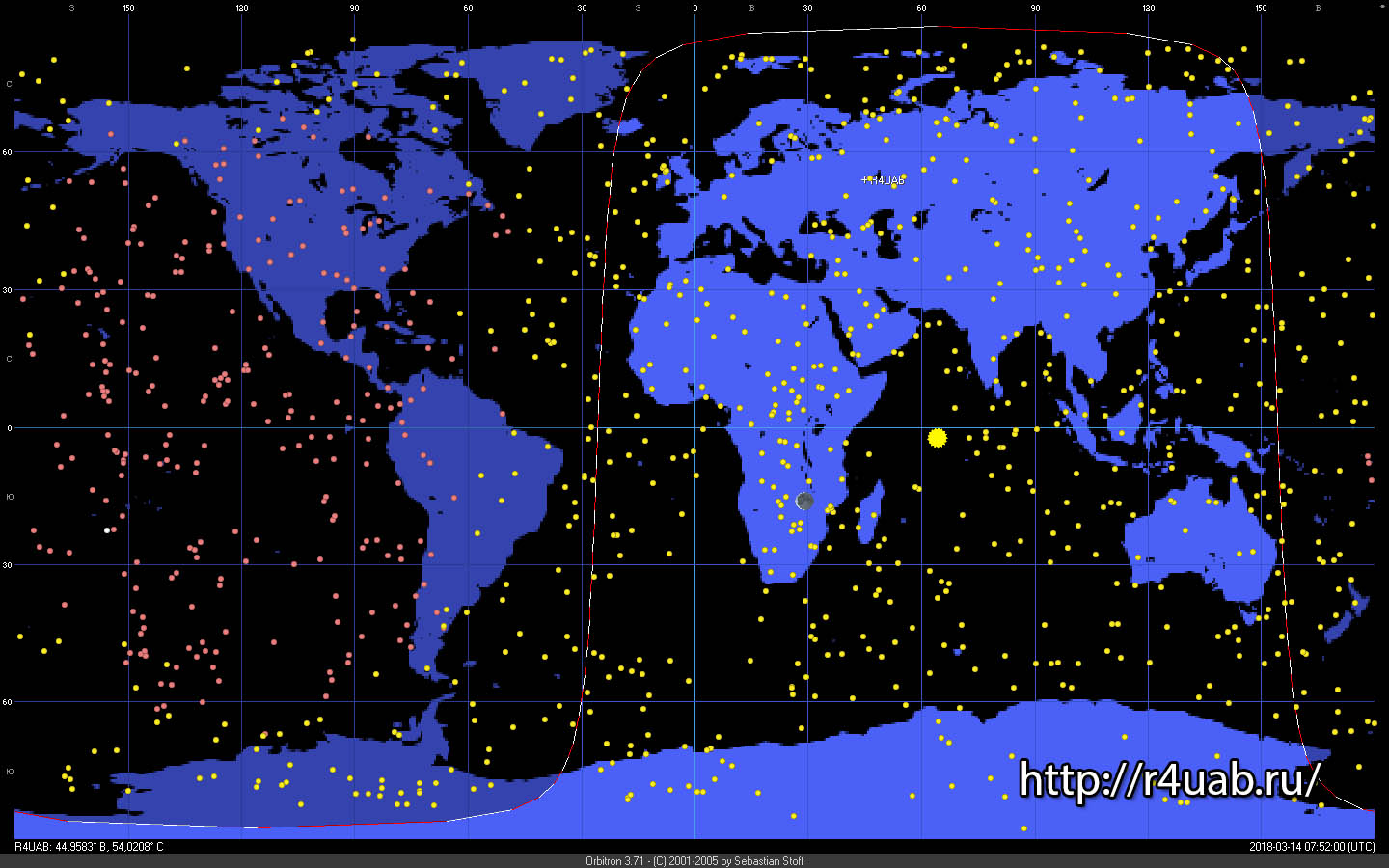
Overhead:
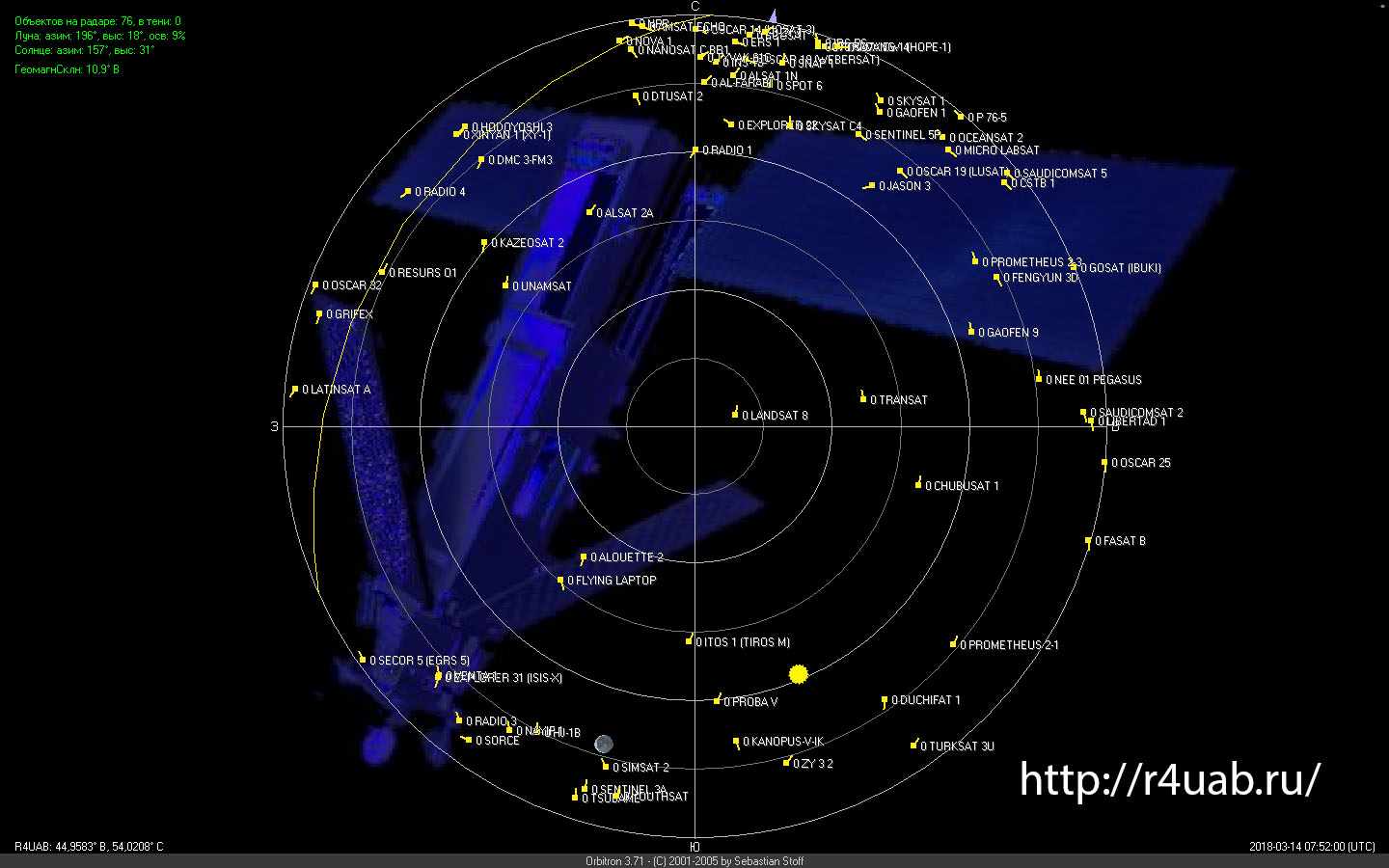
For completeness of observations, we make another observation of the satellite with reference to time and get 4 points of the orbit.

Now we have 4 orbit points when a satellite appears above the horizon:
- March 14, 2018 07:52:10 UTC
- March 20, 2018 07:20:20 UTC
- March 20, 2018 08:55:35 UTC
- March 20, 2018 16:38:50 UTC
For these timestamps create 4 lists with satellites that were in sight. We compare lists for the presence of identical satellites, and if a satellite is not in one of the list, then we delete it. Do not forget to take into account the fact that the device should not be located high above the horizon.
After all the operations, we have only one device for the parameters: TYVAK-61C.
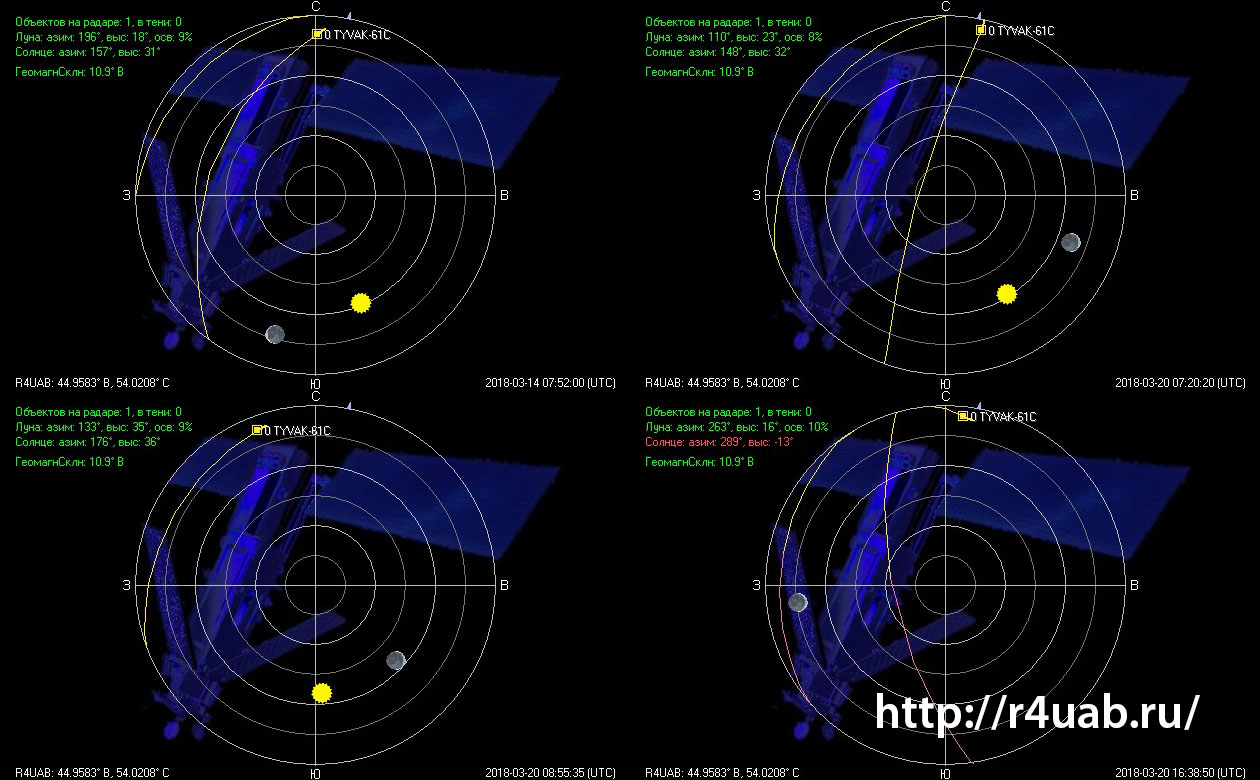
TYVAK-61C - NORAD: 43144, COSPAR number: 2018-004-AK, Period: 1h 34m 32s (my calculation period is 1 hour 35 minutes and 15 seconds).
Now we determine the exact frequency of the satellite signal. The Doppler Effect will help us in this. The Doppler effect is a change in the frequency and, accordingly, the wavelength of the radiation perceived by the observer (receiver), due to the movement of the radiation source and / or the movement of the observer (receiver). The effect is named after the Austrian physicist Christian Doppler.
Now, knowing the parameters of the orbit, we calculate the Doppler effect. With such parameters of the orbit at a frequency of 400.000 MHz, it will be ± 0.009520 MHz.
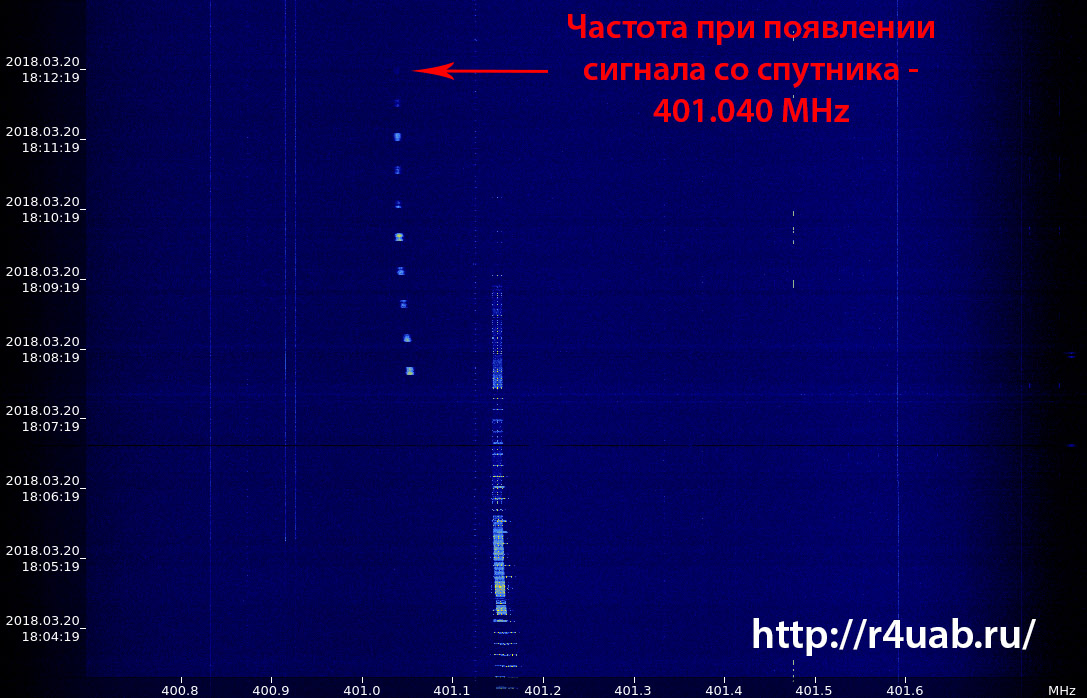
Knowing the frequency when the first signal from the satellite arrives, we calculate the working one, compensating for the Doppler Effect. It turns out - 401.050 MHz.
Check calculations in real time. We are waiting for the next passage of the satellite and see how the signal will diverge from the calculated one. If there are large discrepancies during the reception, then this is not the device, if everything is accurate, then this is the satellite TYVAK-61C. We start the receiving station. We obtained a discrepancy between the frequency of reception and the frequency of the satellite signal (the signal from the satellite appeared at a frequency of 401.042 MHz, and the calculated frequency of reception should be 401.052 MHz).

The discrepancy may be due to two reasons, the first - the satellite was not correctly identified, and the second - the time and frequency scale on the previous screens (overview frequency scan) has a small error. 95% is to blame for the second reason. Knowing the position of the satellite in space, the exact time of reception of the signal and the frequency of reception of the signal, we recalculate the Doppler Effect. We get the frequency of 401.040 MHz. Set the receiver frequency to 401.040 MHz and monitor the signal frequency and the calculated frequency.

Now the frequency of reception, taking into account the effect of Doppler converges. And we can safely say that this is a satellite TYVAK-61C.
TYVAK-61C - American astronomical satellite, which was manufactured by Tyvak Nano-Satellite Systems, Inc. The device is designed to catalog changes in the light of stars. The satellite has dimensions of 10 × 30 cm (3U CubeSat). The TYVAK-61C was launched on January 12, 2018 from the Shriharikot space center in India. Unfortunately, I did not find the images of the device on the Internet, but approximately it looks like a NanoACE satellite.

We are switching the receiver from a viewing antenna to a directional device with a rotating device. We will try to receive information from it and decode the signal.

We identified the satellite, determined the signal frequency and decoded the signal :-) Satellite call sign: GEOSF1.
→ The device is listed in the frequency table
→ The device is added to the list of satellites
→ How to add SATONLINE base to Orbitron
Source: https://habr.com/ru/post/411089/
All Articles